
An electronic musical instrument is a musical instrument that produces sound using electronic circuitry. Such an instrument sounds by outputting an electrical, electronic or digital audio signal that ultimately is plugged into a power amplifier which drives a loudspeaker, creating the sound heard by the performer and listener.

The ZX Spectrum is an 8-bit personal home computer released in the United Kingdom in 1982 by Sinclair Research.
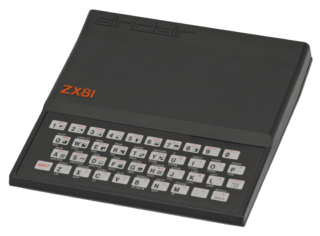
The ZX81 is a home computer that was produced by Sinclair Research and manufactured in Dundee, Scotland, by Timex Corporation. It was launched in the United Kingdom in March 1981 as the successor to Sinclair's ZX80 and designed to be a low-cost introduction to home computing for the general public. It was hugely successful; more than 1.5 million units were sold. In the United States it was initially sold as the ZX-81 under license by Timex. Timex later produced its own versions of the ZX81: the Timex Sinclair 1000 and Timex Sinclair 1500. Unauthorized ZX81 clones were produced in several countries.

Sir Clive Marles Sinclair is an English entrepreneur and inventor, most commonly known for his work in consumer electronics in the late 1970s and early 1980s.

ZX Spectrum demos are demos made for the ZX Spectrum and compatible computers. The demo scene on the Spectrum can probably be traced back to Castor Cracking Group, The Lords and a few other groups and individuals back in 1986. The ZX Spectrum demo scene was slow to start, but it started to rise in the late 1980s, most noticeably in Eastern Europe and southern Europe. Some demos were also released with magazines on cover tapes.

The SAM Coupé is an 8-bit British home computer that was first released in late 1989. It was designed to have compatibility with, and is commonly considered a clone of, the Sinclair ZX Spectrum computer. It features a compatible screen mode and emulated compatibility, and was marketed as a logical upgrade from the Spectrum. It was originally manufactured by Miles Gordon Technology (MGT), based in Swansea in the United Kingdom.
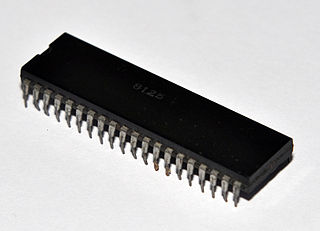
A gate array is an approach to the design and manufacture of application-specific integrated circuits (ASICs) using a prefabricated chip with components that are later interconnected into logic devices according to a custom order by adding metal interconnect layers in the factory.

The Kawasaki Ninja ZX-12R is a motorcycle in the Ninja sport bike series made by Kawasaki from 2000 through 2006. The 1,199 cc (73.2 cu in) inline-four engine produced 178 hp (133 kW) at low speed, and increased to 190 hp (140 kW) at high speed due to its ram-air intake, making it the most powerful production motorcycle up to 2006 and the release of the ZX-14. It was a contender to be the fastest production motorcycle, and played a role in bringing to a truce the escalating competition to build an ever-faster motorcycle. Its top speed was electronically limited to 186 mph (300 km/h), tying it with the Suzuki Hayabusa and Kawasaki Ninja ZX-14 as the fastest production motorcycle on the market, after the 303–312 km/h (188–194 mph) 1999 Hayabusa was replaced with a speed-limited version as part of a gentlemen's agreement between motorcycle manufacturers that lasted until the 298–311 km/h (185.4–193.24 mph) 2007 MV Agusta F4 R 312.

The Nissan 300ZX is a sports car in the Nissan Z-car family that was produced across two similar but unique generations. As with all other versions of the Z, the 300ZX was sold within the Japanese domestic market under the name Fairlady Z.
Sinclair Research Ltd is a British consumer electronics company founded by Clive Sinclair in Cambridge. It was originally incorporated in 1973 as Westminster Mail Order Ltd, renamed Sinclair Instrument Ltd, then Science of Cambridge Ltd, then Sinclair Computers Ltd, and finally Sinclair Research Ltd. It remained dormant until 1976, when it was activated with the intention of continuing Sinclair's commercial work from his earlier company Sinclair Radionics, and adopted the name Sinclair Research in 1981.
Hewson Consultants were one of the smaller software companies which produced games for home computers in the mid-1980s. They had a reputation for high-quality games which continually pushed the boundaries of what the computers were capable of and can be compared favourably with other ground-breaking software houses like Ultimate Play the Game and Beyond. Fourteen of their games were awarded "Megagame" by Your Sinclair.

Micronet 800 was an information provider (IP) on Prestel, aimed at the 1980s personal computer market. It was an online magazine that gave subscribers computer related news, reviews, general subject articles and downloadable telesoftware.

Egg was a style magazine for gyaru fashion, distributed in Japan. It featured photos of ganguro girls and synopses of their tastes and popular trends. The magazine also usually had photos of the newest fashions, where to buy them, latest hairstyles, cell phones, and make up tips. It also had candid photos of ganguro girls on the streets of Japan, similar to Fruits magazine. Egg had its own models which starred in every magazine. Due to the decline of Gyaru popularity, the magazine shut down with the last issue on 31 May 2014.

Nintendo Gamer was a magazine published in the United Kingdom which mainly covered Nintendo video game consoles and software and consoles. It was the successor publication to N64 Magazine, later renamed NGC Magazine (1997–2006) and Super Play (1992–1996), continuing the unique style of those magazines. The publication was originally known as NGamer, with the first issue being released on 13 July 2006. From issue 71 onward, released on 5 January 2012, the magazine was renamed Nintendo Gamer and was significantly reformatted. On 30 August 2012, it was announced that issue 80, which went on sale on 7 September 2012 was to be the final issue.
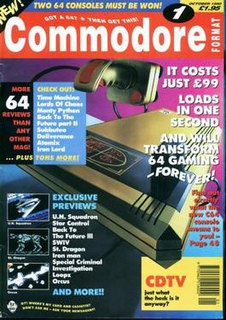
Commodore Format was a British magazine for users of the Commodore 64 home computer. It was published on the third Thursday of every month. All 61 issues were produced by Future plc. These came towards the end of the machine's commercial life - from October 1990 until October 1995.
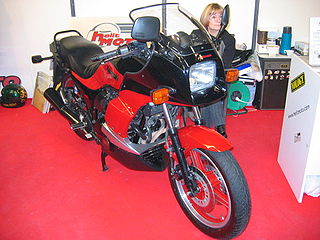
The Kawasaki GPz750 Turbo was a sportbike manufactured from late 1983 to 1985, with two model years – the 1984 E1 and the 1985 E2. Differences were minor, a twin "push/pull" throttle cable for the E2 and different brake caliper stickers. The bike was manufactured in Japan, with parts also shipped to the US and assembled in Kawasaki's Nebraska plant for the US/Canada market to bypass the import tax levied on bikes over 700cc at the time by the US government, a protectionist move designed to save Harley-Davidson which was having financial problems at the time.

Personal Computer Games was a multi-format UK computer games magazine of the early/mid-1980s published by VNU.
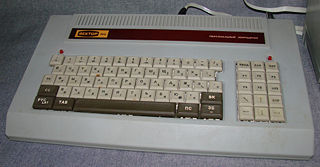
Vector-06C is a home computer with unique graphics capabilities that was designed and mass-produced in USSR in the late 1980s.

Input was a partwork published by Marshall Cavendish in the United Kingdom during 1984 and 1985, covering the subject of home computer programming. This magazine is not to be confused with Input, a website founded by former editor-in-chief of Engadget, and founder of The Verge, Joshua Topolsky.


















